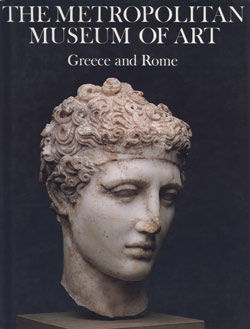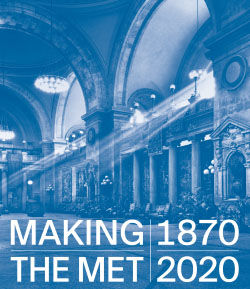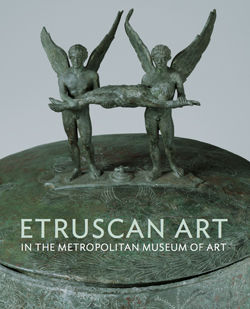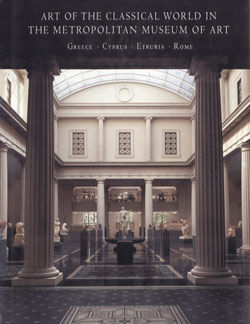Bronze statuette of a young woman
This statue, perhaps the best-known Etruscan figural bronze in the Museum's collection, was produced at one of the major bronze working centers, probably Vulci or Chiusi. The artist was clearly inspired by archaic Greek korai, votive statues of young women, a connection especially noticeable in the typical frontal pose with right hand extended and left hand holding the garment. However, the sculptor was not especially concerned about the accurate depiction of costume. The Greek himation (cloak), for example, is misrepresented. The folds so prominently visible from the front are absent on the back of the statue, perhaps an indication that the artist was looking at a two-dimensional source such as a relief sculpture or vase painting rather than a sculpture in the round. In any case, he clearly was more interested in rich surface embellishment than in realistic rendering of drapery and produced a wealth of engraved details in the hair, jewelry, sewn seams, decorated hems, and drapery folds. The pointed shoes (calcei repandi), here elaborately rendered with meticulously detailed laces and floral ornament, are distinctively Etruscan. The figure's left foot is a modern restoration.
Due to rights restrictions, this image cannot be enlarged, viewed at full screen, or downloaded.
This artwork is meant to be viewed from right to left. Scroll left to view more.







